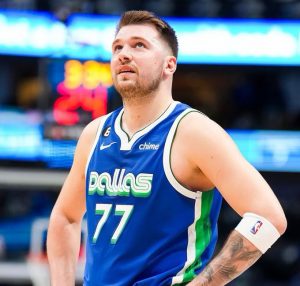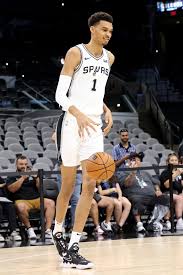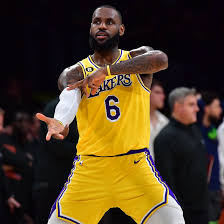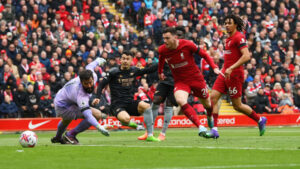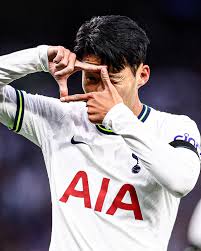NBA PREVIEW : UTAH MUST TURN REGULAR SEASON FORM TO POST SEASON SUCCESS

There may not have been a bigger surprise in the NBA last season than the Utah Jazz. While most predicted them to be terrible in the immediate aftermath of the trades that saw Rudy Gobert and Donovan Mitchell leave town, Utah competed every night, saw Lauri Markkanen turn into an All-Star, and despite fading down the stretch, laid the groundwork to be a team that competes in the future.
Utah was a pleasant surprise last season when it got off to a 10-3 start and ultimately surpassed its win total before the All-Star break. As great as the story was though, there were signs that the Jazz were living on the edge, and the team ultimately finished with just 37 wins while looking like one of the lesser teams in the league while doing so.
The Jazz return essentially intact this season – outside of one key acquisition – which begs the question: Will bettors get the team that surprised the NBA, or the team that was 10-19 in its final 29 games with one of the worst net ratings over that span?
To answer that question we need to nail down what we know about Utah, and what we know is this team will be one of the worst defensive teams in the league.
Last season the Jazz gave up 117.2 points per 100 possessions in non-garbage time. Their perimeter defense was among the worst in the NBA. Opponents averaged 18.5 wide-open 3-point attempts – defender six feet or further away – per game against Utah. Their perimeter numbers could have been worse had their opponents not shot just 38.1% on those attempts – the 11th-best rate in the league – so there is certainly a possibility that this defense looks worse should it allow the same rate of opportunities from distance this season.
There is no reason to believe that will not be the case either. Utah lacks a true defensive option along the perimeter on this roster. Its projected starting lineup of Collin Sexton, Jordan Clarkson, Lauri Markkanen, John Collins and Walker Kessler has only one good defender: second-year center Kessler. The most used lineup combination of Sexton, Clarkson, Markkanen and Kessler averaged an incredible 123.4 points per 100 possessions but still had a -1.6 net rating due to a defense that gave up 125.0 points per 100 possessions on the other end. Collins has been a statistical positive on defense throughout his career, but he is hardly a game-changer on that end of the floor.
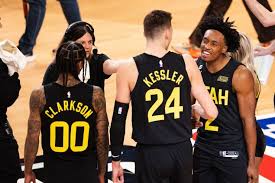
There is also a worry that Collins might not be a seamless fit on offense as well.
Utah’s offense is predicated on spacing and shooting. The Jazz might have finished 20th in 3-point percentage (35.8%), but that was a symptom of being a high-volume shooting team. They took the fifth-highest rate of 3-point attempts and made the seventh most shots from beyond the arc. Collins is going to play power forward for this team, but his shooting has been steadily declining each of the last three seasons, and it bottomed out at 29.2% last season. Should Collins continue to shoot at a subpar rate, it will greatly affect this team’s offense and spacing.
Still, Will Hardy has shown he can coordinate an efficient offense, which should be the case again this season.
Clarkson had a career year as a full-time starter under Hardy. He posted career-highs in scoring (20.8) and assists (4.4) while posting the best points per 100 shot attempts mark he’s had (113.4) since playing with LeBron James in Cleveland. Clarkson improved the Jazz’s offense rating by 4.7 points per 100 possessions and should be just as effective from a scoring standpoint this season.
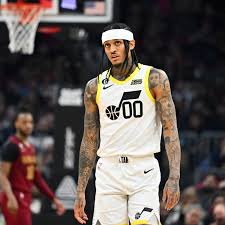
Sexton took a step back when it came to scoring – he posted the lowest points per game mark of his career last season – but his efficiency in Hardy’s system took a big step forward. He hit career-highs in field goal percentage (50.6%), 3-point percentage (39.3%) and points per shot attempt (122.6).
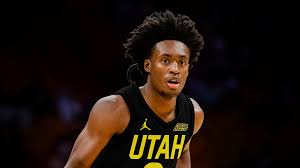
The same is true of Markkanen, who won Most Improved Player while having a career season in which he set personal bests in usage rate (23.7%), points per game (25.6), assists per game (1.9), field goal percentage (49.9%), points per shot attempt (129.3) and efficiency differential (+10.8).
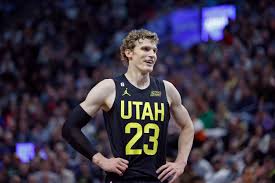
However, what was something that thrust Utah past preseason expectations last season threatens to cause the team to fall below expectations this season. Can Clarkson, Sexton and Markkanen all repeat their career seasons?
Those career years on offense were still not enough to overcome poor defense, and what will be constant is that lack of defensive prowess this season. Should they all regress – which is likely after such incredible seasons – this team will be hard-pressed to repeat a season in which they finished with the second-best cover rate in the league (58.2%).
With the current backcourt, Dunn is the only player that is a distribute-first, score second player. Dunn has the ability to score at will, averaging 13.2 PPG, while able to produce 5.6 APG and 4.5 RPG. George showed promise during the summer league running the point in six games (3 in Salt Lake, 3 in Las Vegas). George was able to score 18.7 PPG while tallying up 5.3 APG and 3.7 RPG. Both Dunn and George show prowess on defense with Dunn averaging 1.1 SPG and George with 1.3 SPG in summer league. Though both have favorable numbers, contracts are a factor.
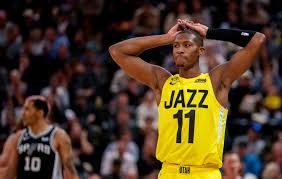
Horton-Tucker as a starter last season showed that he was a viable option to run point, averaging 18.3 PPG, 5.2 RPG and 5.9 APG. Though these numbers look great, the big knock on his numbers were his turnovers. As a starter, the closest that any other player is to Horton-Tucker in turnovers is Clarkson and Dunn with three turnovers per game.

Having a looming question mark over the backcourt will be interesting to watch as the season progresses. Although unknown on how Utah head coach plans to spread out minutes amongst the seven guards, keeping opposing teams on their toes with rotations doesn’t sound like a bad thing.
For the first time since 2004, Utah had three first round picks going into the 2023 NBA Draft. Though there was a lot of speculation on whether or not Utah would use all three picks, Utah lowered the anchor and kept all three picks. Drafting three players that are able to stretch the floor on offense and defense while playing multiple positions will be a blessing in disguise.
With the ninth pick in the 2023 NBA Draft, the Utah Jazz selected Taylor Hendricks from UCF. In his only season at UCF, Hendricks averaged 15.1 PPG, 7.0 RPG and 1.4 APG. A large part of Hendricks’ success in college was his ability to block shots averaging 1.7 BPG. Even with being a force on defense, his opponents had to respect him on offense since he was shooting 39.4 percent from the perimeter and led UCF shooting 47.8 percent from the field. His contributions to UCF led to him being a Kyle Macy (Freshman of the Year) award finalist, along with being selected to the AAC Second Team All-Conference and unanimously selected to the AAC All-Freshman Team. Hendricks’ versatility will make his transition into the NBA a little easier, but Hardy will need to mold his raw talent to have his career thrive.
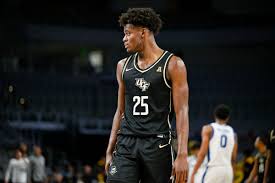
With the 16th pick in the 2023 NBA Draft, the Utah Jazz selected Keyonte George from Baylor. The exciting, fast-paced guard will bring the same type of swagger that Sexton brought to Utah last season. Having that energy through your full roster will prove to drive this team towards success. In his one season at Baylor, George averaged 15.3 PPG, 4.2 RPG, 2.8 APG while shooting 33.8 percent from the perimeter and 37.6 percent from the field.
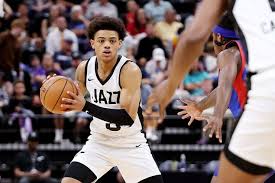
George made an immediate impact as a five-star recruit and the third ranked player in the 2022 class according to ESPN. On top of George having the most 20-point games (12), three pointers made (77) and second most points by a freshman (506) in program history, George was also named Big 12 Freshman of the Year, All-Big 12 Newcomer Team, All-Big 12 Freshman Team and All-Big 12 Second Team. Though George fell to the 16th pick, these accolades should make Utah fans excited for this young man’s future.
With the 28th pick in the 2023 NBA Draft, the Utah Jazz selected Brice Sensabaugh of the Ohio State University. The 2021-22 Florida Gatorade Player of the Year and Mr. Basketball started his season at OSU off the bench. Once averaging 14.3 PPG off the bench, he moved into the starting lineup a month into the season. From that point on, Sensabaugh became the first freshman since D’Angelo Russell to lead OSU in scoring. He was even second on the team in rebounds per game (5.4) and gained accolades such as All-Big Ten Third Team, Big Ten All-Freshman, and a Julius Erving award finalist which goes to the top small forward in men’s collegiate basketball each season. The 6’6 forward showed that he can be a threat on the offensive end, shooting a respectable 48.2 percent from the field and a team-high 40.5 percent from the perimeter. Sensabaugh’s raw talent should have Utah fans excited for his development, but don’t be surprised to see him have a similar path as teammate, Ochai Agbaji, spending some time in the G League to receive minutes that he deserves.
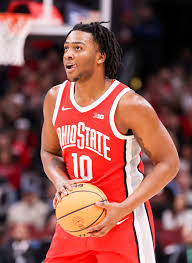
The case for the Jazz to go over their win total begins with their schedule and homecourt. Utah has the second-easiest schedule in the league, according to Positive Residual. Part of that rating comes from having one of the strongest homecourts in the NBA. The Jazz went 23-18 SU at home last season, as opposed to 14-27 SU on the road. They have an even amount of games in which they have either a rest advantage or a disadvantage, but playing at altitude gives them an edge throughout the rigors of a regular season.
Biggest Question: How Much Better Can Their Young Guys Get?
Both Markkanen and John Collins will be 26 at the start of the season. Collin Sexton will be 24. A number of guys who you can reasonably expect to have roles on the team — Walker Kessler, Ochai Agbaji, Talen Horton-Tucker — are all 22 or 23. They have three first-round rookies (Keyonte George, Taylor Hendricks, Brice Sensabaugh) who are all 19. Obviously, the team will see what it has with those rookies, but as Markkanen showed last year, Utah under Will Hardy puts guys into an environment where they can grow into the best version of themselves.
Sexton, for example, is a fascinating player to watch. While it’ll be interesting to see Kessler continue to establish himself as one of the league’s most intimidating defensive presences and Agbaji try to build on his close to last year, the Jazz have questions at point guard, both this year and in the future. Sexton, the former Cleveland Cavalier who played in 48 games last year with 15 starts, had an up-and-down season in 2022-23 as he looked to get back up to speed following a torn meniscus the year prior and appeared in one game after the All-Star break. Can he, in year two of a four-year contract, find his form and establish himself as a crucial piece of the puzzle in Utah? If not, can a guy like Horton-Tucker take a step forward as a jumbo playmaker? Can George get up to speed and run the point? Will they have to rely heavily on a grizzled veteran like Kris Dunn?
No matter what, there is plenty of young talent here, and it’s a lot of guys who are not yet (and, in some circumstances, nowhere near) the prime of their careers. With how the team is building towards a future where they will compete for championships, development is the single most important thing to watch this season.
PLAYER WATCH
JOHN COLLINS
Let’s take a quick trip back to June 20, 2021. The Atlanta Hawks walked into Philadelphia and knocked off the 1-seed in the Eastern Conference in a Game 7, thanks in part to the play of John Collins. He had 14 points on 5-for-6 shooting along with a game-high 16 rebounds, and looked to be a crucial part of what was being built in Atlanta. He cashed in not long after with a 5-year, $125 million contract, and for some reason, it sure seemed like the Hawks spent every moment since then trying to trade him.
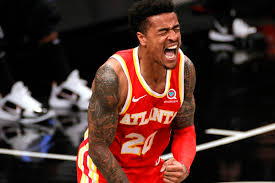
Whether it was injuries, a lesser role, or something else, Collins last year had his least productive season since his rookie campaign — his 13.1 points and 6.5 rebounds in 30 minutes per game were the lowest marks since his first year in the league. He shot 50.8 percent from the field and 29.2 percent from three, and had a usage rate of 17.1 percent, all of which were career-lows. As such, Utah opted to take a remarkably cheap flyer on him, acquiring him for the low price of Rudy Gay and a second-round pick.
Obviously, Utah doesn’t need Collins to turn into a guy who goes for 25 points and 12 rebounds a night or anything like that. But the athleticism and ability to stretch the floor that he brings should fit nicely alongside Markkanen and Kessler, he’s under contract for at least the next two seasons, and at his best, he’s a really dynamic frontcourt option. A roll of the dice on a guy like that makes a ton of sense, and as we saw last year with Markkanen, the Jazz have an idea of how to help these sorts of guys take a step forward in their careers. Getting him was the ultimate low-risk, high-reward move.
